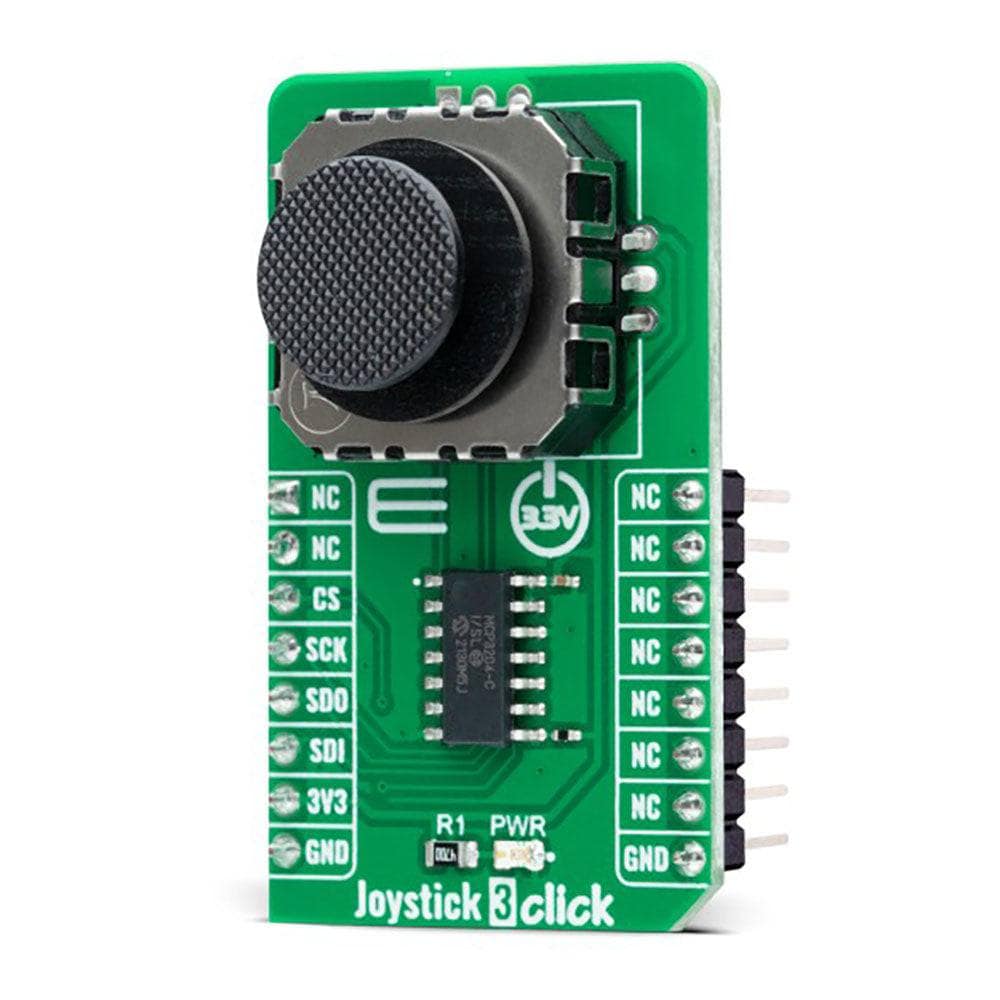
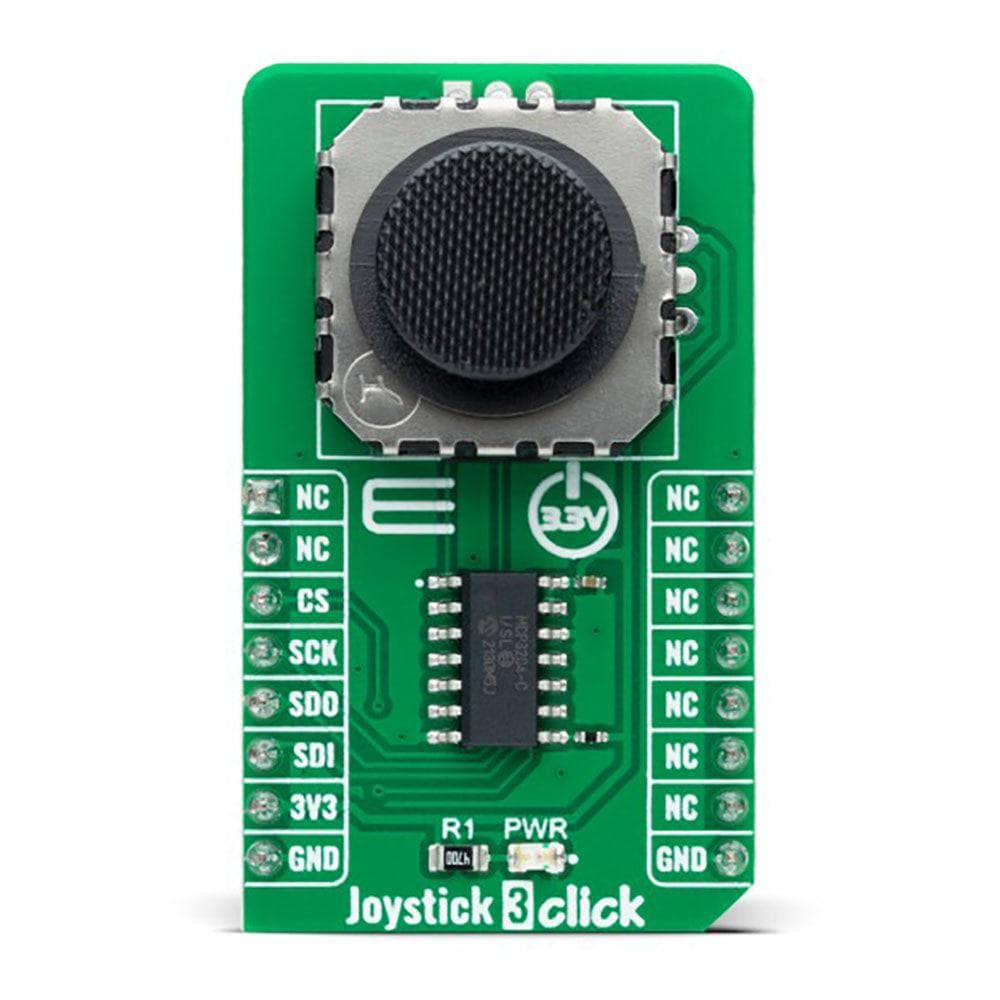
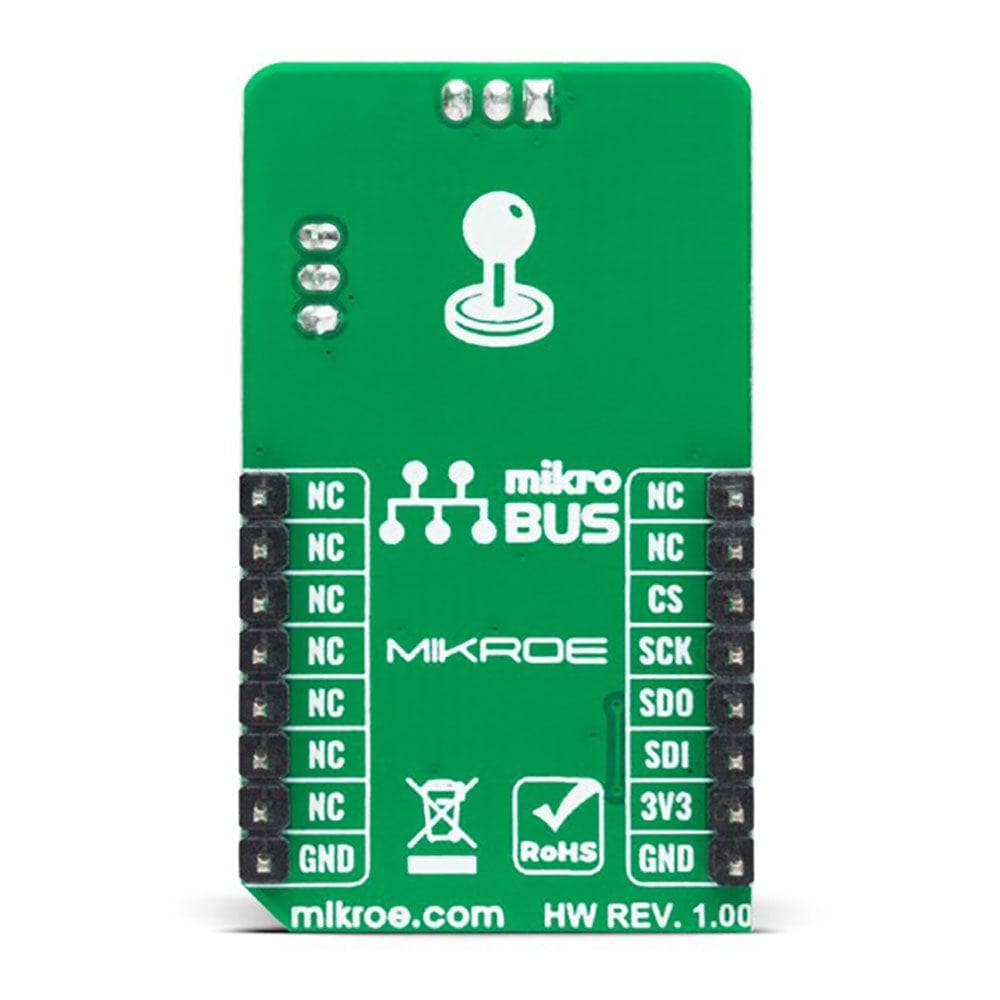
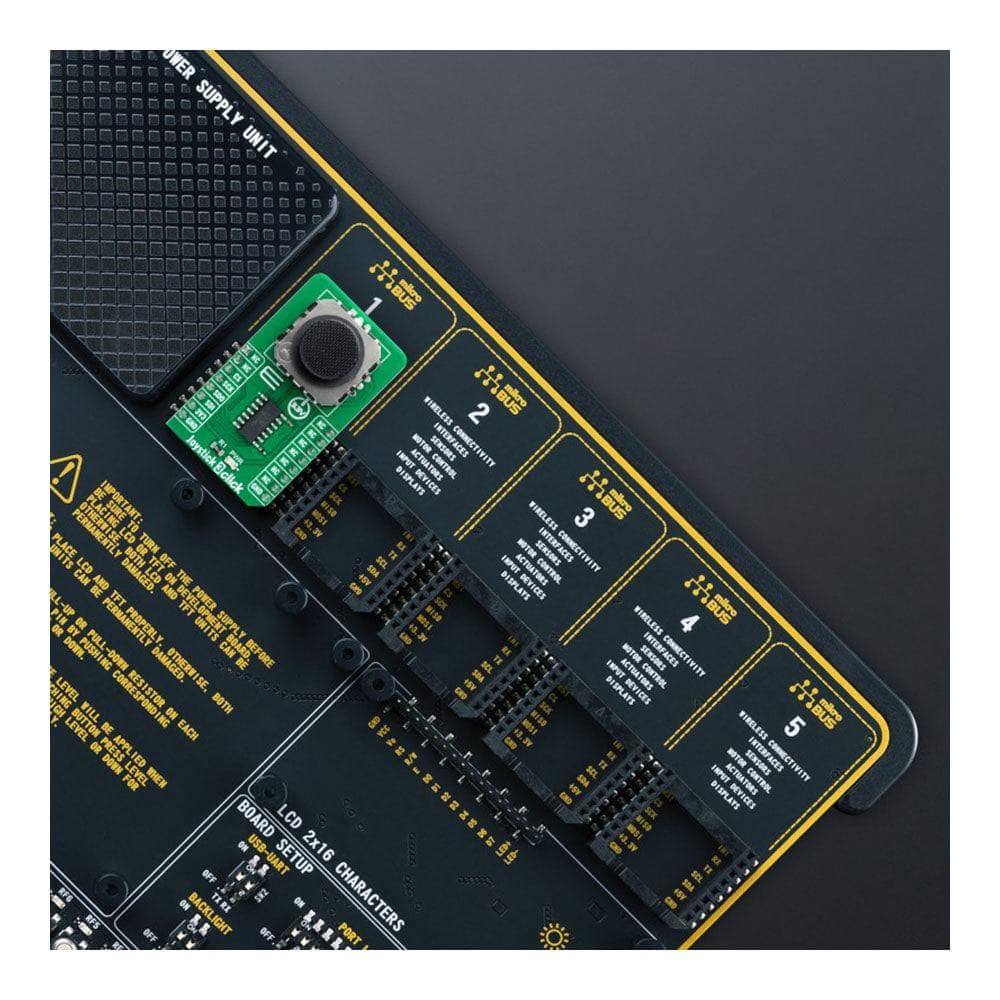
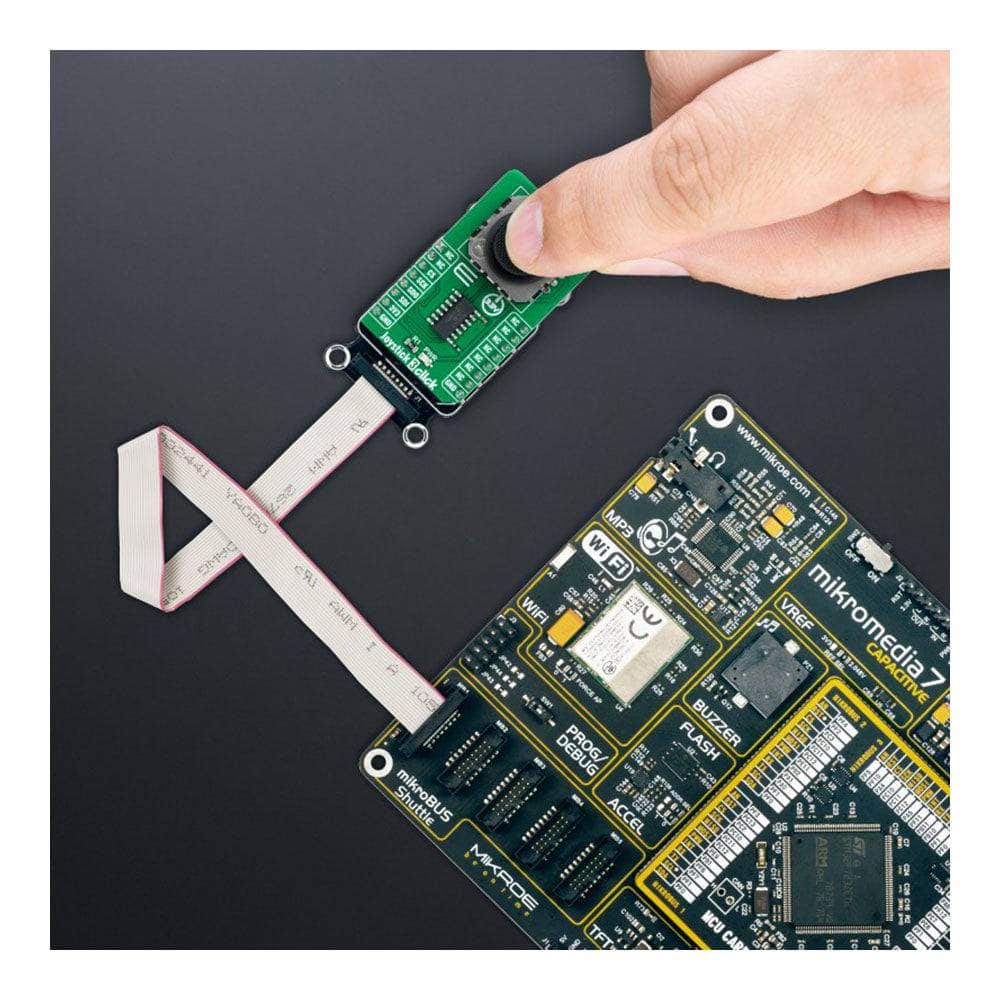
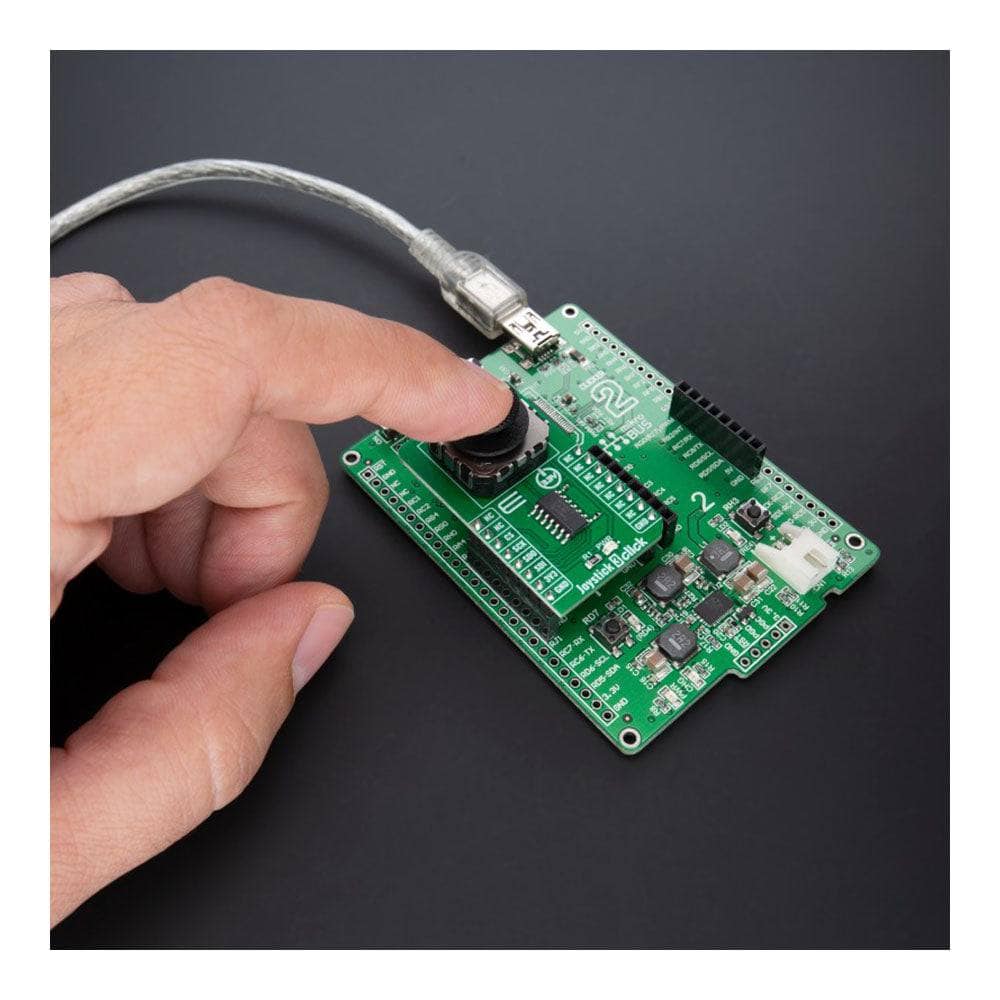
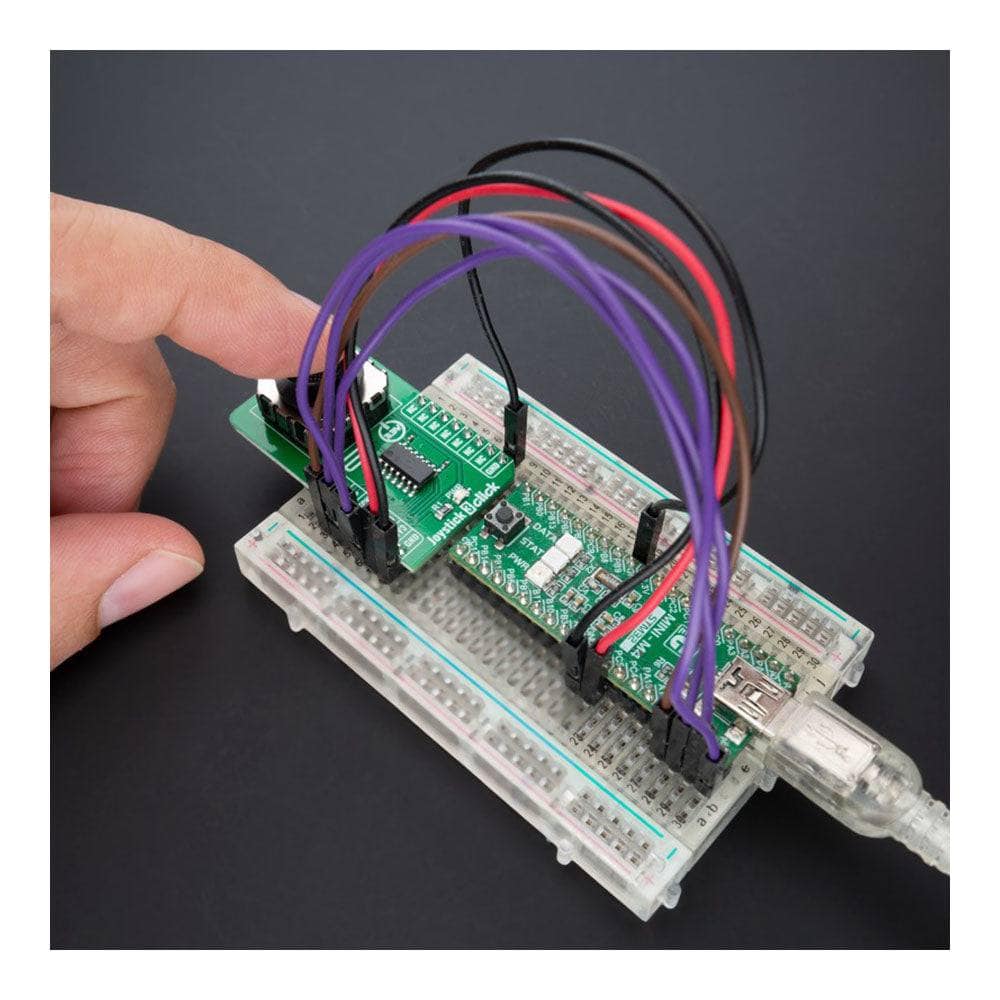
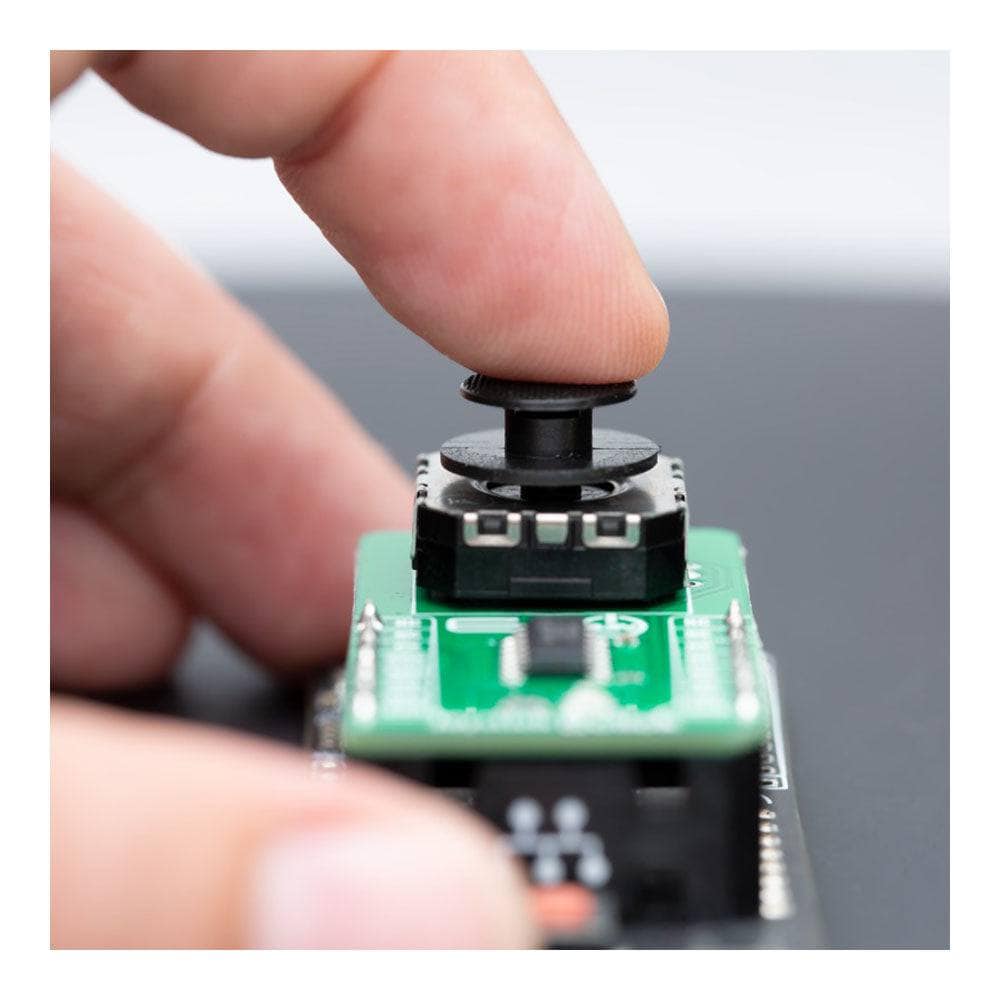
Key Features
Overview
Experience precise directional control with Joystick 3 Click Board™
Upgrade your directional analogue input needs with the compact and high-quality Joystick 3 Click Board™. This add-on board features the 2765 mini 2-axis analogue output thumbstick from Adafruit Industries, providing you with a 'self-centring' analogue-type joystick with a black rocker cap similar to PSP joysticks.
Precise control with 10kΩ potentiometers
The Joystick 3 Click Board™ is equipped with two 10kΩ potentiometers, one for up/down and another for left/right direction. These potentiometers ensure accurate and precise control, making this Click board™ perfect for various applications such as human-machine interface devices (HMI), robotics, and other control interfaces.
Seamless connection with mikroBUS™
The Joystick 3 Click Board™ connects seamlessly with mikroBUS™ through the MCP3204 12-bit A/D converter. This ensures fast and efficient data transfer, providing you with smooth and responsive control.
Simplified software development with mikroSDK-compliant library
Developing software for the Joystick 3 Click Board™ is a breeze with the mikroSDK-compliant library. This library includes functions that simplify software development, making it easier for you to get started with your project.
Ready-to-use, thoroughly tested product
The Joystick 3 Click Board™ comes as a thoroughly tested product, ensuring that it's ready to be used on a system equipped with the mikroBUS™ socket. This means that you can start using the Click board™ right out of the box, without any additional setup or testing required.
Upgrade your control interfaces and HMI devices with the Joystick 3 Click Board™ today!
Downloads
Expérimentez un contrôle directionnel précis avec Joystick 3 Click Board™
Améliorez vos besoins en entrée analogique directionnelle avec le Joystick 3 Click Board™ compact et de haute qualité. Cette carte complémentaire comprend le mini joystick de sortie analogique à 2 axes 2765 d'Adafruit Industries, vous offrant un joystick de type analogique « auto-centrant » avec un capuchon à bascule noir similaire aux joysticks PSP.
Contrôle précis avec des potentiomètres de 10 kΩ
Le Joystick 3 Click Board™ est équipé de deux potentiomètres de 10 kΩ, un pour le haut/bas et un autre pour la direction gauche/droite. Ces potentiomètres assurent un contrôle précis et exact, ce qui rend ce Click board™ parfait pour diverses applications telles que les dispositifs d'interface homme-machine (IHM), la robotique et d'autres interfaces de contrôle.
Connexion transparente avec mikroBUS™
Le Joystick 3 Click Board™ se connecte de manière transparente au mikroBUS™ via le convertisseur A/N 12 bits MCP3204. Cela garantit un transfert de données rapide et efficace, vous offrant un contrôle fluide et réactif.
Développement logiciel simplifié avec une bibliothèque compatible mikroSDK
Le développement de logiciels pour le Joystick 3 Click Board™ est un jeu d'enfant grâce à la bibliothèque compatible mikroSDK. Cette bibliothèque comprend des fonctions qui simplifient le développement de logiciels, ce qui vous permet de démarrer plus facilement votre projet.
Produit prêt à l'emploi et entièrement testé
Le Joystick 3 Click Board™ est un produit entièrement testé, ce qui garantit qu'il est prêt à être utilisé sur un système équipé de la prise mikroBUS™. Cela signifie que vous pouvez commencer à utiliser le Click board™ dès sa sortie de la boîte, sans aucune configuration ni test supplémentaire requis.
Mettez à niveau vos interfaces de contrôle et vos périphériques IHM avec le Joystick 3 Click Board™ dès aujourd'hui !
| General Information | |
|---|---|
Part Number (SKU) |
MIKROE-5378
|
Manufacturer |
|
| Physical and Mechanical | |
Weight |
0.02 kg
|
| Other | |
Country of Origin |
|
HS Code Customs Tariff code
|
|
EAN |
8606027387265
|
Warranty |
|
Frequently Asked Questions
Have a Question?
Be the first to ask a question about this.








